Vision Restored with Human Adult Stem Cells
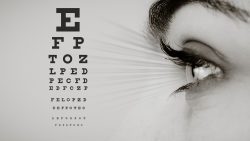 New research from Boston has shown success in the regrowth of human corneal tissue from adult stem cells to restore vision. Whether corneal tissue loss is due to damage from burns, chemical injury or eye diseases it is one of the leading reasons for blindness. This new groundbreaking process has the potential to restore vision in people that are blind.
New research from Boston has shown success in the regrowth of human corneal tissue from adult stem cells to restore vision. Whether corneal tissue loss is due to damage from burns, chemical injury or eye diseases it is one of the leading reasons for blindness. This new groundbreaking process has the potential to restore vision in people that are blind.
Inside the eye’s limbus reside stem cells that regenerate and maintain corneal tissue. When they are lost due to injury or disease blindness occurs. Transplants have been used in the past to regenerate corneal growth but the outcomes have not been consistent.
This is one of the first examples of tissue being constructed from adult stem cells derived from humans. The fundamental key to the success of this study is based on a molecule which is known as ABCB5. This is a biomarker for limbal stem cells that has previously been elusive. These particular cells are in the eye’s limbus, which is the cornea’s border and the white part of the eyes. They are important for recreating and maintaining corneal tissue. They have regenerative ability that researchers have striven for a while to harvest to grow human tissue in people who are blind from corneal disease or injury.
From over 10 years ago, the teams at the lab of the lead researcher discovered the essential ABCB5 molecule. It was seen in the skin and the intestine precursor cells. They discovered that the ABCB5 was an integral part of the eye’s limbus due to it preventing the cells from dying. To show another role of ABCB5’s in the eye, the team used mice divided into two groups. One group had a ABCB5 gene that was non-functional and the other group possessed a ABCB5 gene that was totally functioning. The mice who lacked the ABCB5 gene lost all of their limbal stem cell population, thus they could not repair any injuries to the corneas.
The team obtained corneal tissue from human deceased donors. They used antibodies that will bind to ABCB5 to find the limbal stem cells. After they were located, they removed them from the donor’s tissue and they were transplanted into the mice in which the limbal stem cells had been extracted. Their prediction was realized as fully corneal tissue derived from the deceased human donors was created in the mice which restored their vision. But the process only worked only when the crucial ABCB5 molecule was present in the limbal stem cells.
They will continue their study of ABCB5 to see if it could be used in a similar function for isolating skin stem cells for the use of transplantation. They do note that it has changed the game for adult stem cell research due to its identity as a molecular marker.
To view the original scientific study click below:
ABCB5 is a limbal stem cell gene required for corneal development and repair



 As you think about what to drink and eat to help with aging, have you ever wondered what is the best fruit for anti-aging?
As you think about what to drink and eat to help with aging, have you ever wondered what is the best fruit for anti-aging? A recent study has shown that people with a high degree of body fat are at risk for a reduction in their cognitive function. Even when vascular brain injuries or cardiovascular risks were taken into consideration, the link associated with body fat and cognitive scores being lower remained the same. This has suggested that not yet confirmed pathways link cognitive function reduction and excess body fat.
A recent study has shown that people with a high degree of body fat are at risk for a reduction in their cognitive function. Even when vascular brain injuries or cardiovascular risks were taken into consideration, the link associated with body fat and cognitive scores being lower remained the same. This has suggested that not yet confirmed pathways link cognitive function reduction and excess body fat.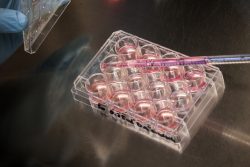 In a global-first, researchers from Chinese Academy of Sciences and BGI-Research and other partners, have announced the discovery of a rapid, transgene-free, and controllable way to change pluripotent stem cells into authentic 8 cell totipotent embryo-like cells. This paves the way for future advances in synthetic biology and regeneration of organs.
In a global-first, researchers from Chinese Academy of Sciences and BGI-Research and other partners, have announced the discovery of a rapid, transgene-free, and controllable way to change pluripotent stem cells into authentic 8 cell totipotent embryo-like cells. This paves the way for future advances in synthetic biology and regeneration of organs. A new study has set out to find a link between the number of vegetables we eat and whether they have any kind of impact on psychological and happiness well-being.
A new study has set out to find a link between the number of vegetables we eat and whether they have any kind of impact on psychological and happiness well-being. 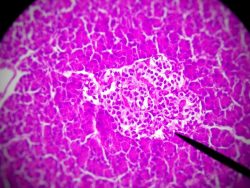 Researchers have made pioneering efforts to fully use the function of pancreatic cells that have been produced from stem cells. The new study has shown that stem cells can form other cells that very closely copy normal pancreatic islets in both function and structure.
Researchers have made pioneering efforts to fully use the function of pancreatic cells that have been produced from stem cells. The new study has shown that stem cells can form other cells that very closely copy normal pancreatic islets in both function and structure. The UK’s recommended consumption of alcohol is 14 units or less per week. This is the weekly equivalent of 6 pints of average-strength beer or 10 small glasses of low-strength wine. New research shows that even this amount may increase cardiovascular issues such as heart and cerebrovascular disease.
The UK’s recommended consumption of alcohol is 14 units or less per week. This is the weekly equivalent of 6 pints of average-strength beer or 10 small glasses of low-strength wine. New research shows that even this amount may increase cardiovascular issues such as heart and cerebrovascular disease.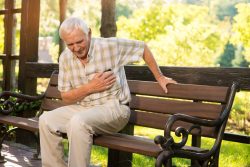 Researchers are now using stem cell based therapies to repair the heart after an injury such as cardiac ischemia or heart attack. Such injuries limit the ability of the heart to pump producing lower oxygen blood levels. That makes it harder for a person to perform daily activities.
Researchers are now using stem cell based therapies to repair the heart after an injury such as cardiac ischemia or heart attack. Such injuries limit the ability of the heart to pump producing lower oxygen blood levels. That makes it harder for a person to perform daily activities.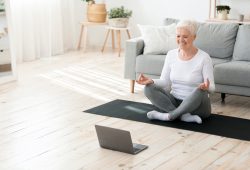 How hard is it for you to get up from sitting on the floor? A study done in 2014 found that the ease of standing from sitting on the floor can be a significant predictor of longevity in older adults. More recent research in May 2020 backs up the findings.
How hard is it for you to get up from sitting on the floor? A study done in 2014 found that the ease of standing from sitting on the floor can be a significant predictor of longevity in older adults. More recent research in May 2020 backs up the findings. A new study has shown a lower mortality rate in adults aged over 65 can be achieved by adhering to a Mediterranean diet. This analysis was determined from the InCHIANTI project based in Tuscany, Italy. Over a 20-year period a total of 642 women, of which 56% were aged 65 or older participated.
A new study has shown a lower mortality rate in adults aged over 65 can be achieved by adhering to a Mediterranean diet. This analysis was determined from the InCHIANTI project based in Tuscany, Italy. Over a 20-year period a total of 642 women, of which 56% were aged 65 or older participated.